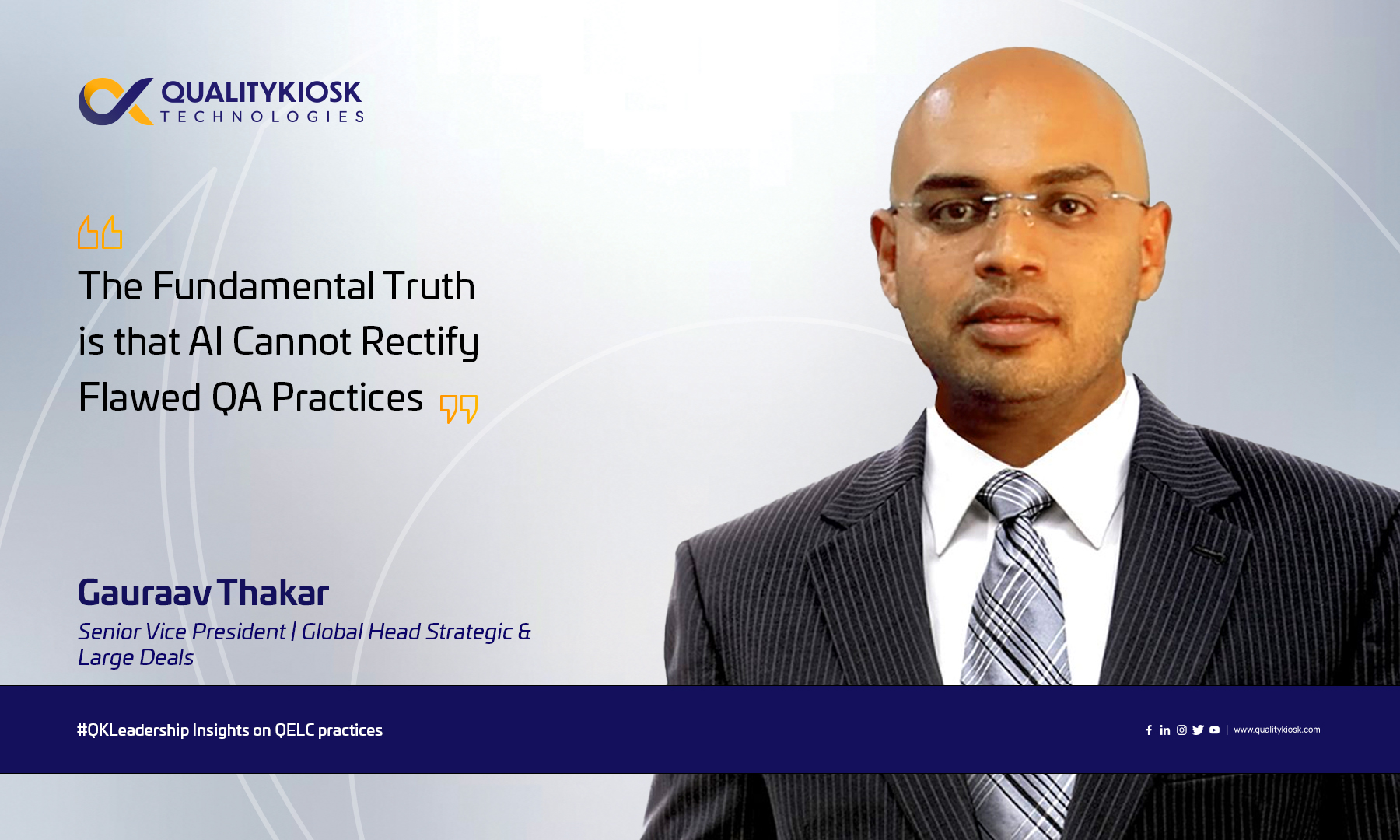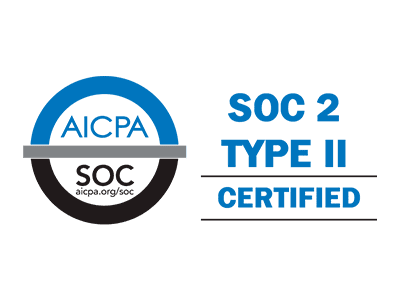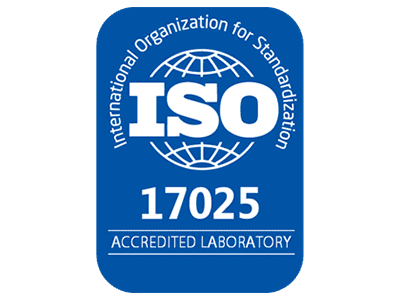As a senior business leader in the digital industry, I’ve witnessed firsthand how quality engineering has evolved from a cost center to a strategic differentiator. After a decade in the industry, I’ve observed how conversations around AI in Quality Assurance (QA) and Quality Engineering (QE) tend to swing between overhyped promises and dismissive skepticism.
This article puts forth my perspective and tries to cut through that noise to offer a pragmatic perspective on how forward-thinking organizations can leverage AI in testing, not as a tool to replace human expertise, but to amplify it for competitive advantage.
5 Key Takeaways
- AI is an amplifier of human testing expertise, not a replacement for it
- Successful AI implementation requires strong foundational QE practices
- The most effective applications include intelligent test automation, predictive defect analytics, smart test data management, and advanced visual testing
- Common pitfalls include blind reliance on AI without human validation and implementing AI tools without strategic vision
- The future belongs to QA professionals who embrace AI as a collaborative partner rather than fearing or overhyping it
AI: Amplifying Human Ingenuity, Not Supplanting It
The most pervasive misconception is that AI is a substitute for human testers. This couldn’t be further from the truth. AI excels at automating repetitive tasks, sifting through colossal datasets, and identifying patterns that might elude human observation.
But effective QA & QE transcend mere automation. Instead, they demand critical thinking, problem-solving prowess, and a deep understanding of the business context. Consider this: AI can generate thousands of test cases based on predefined parameters. But can it discern whether a newly implemented feature genuinely enhances user experience? Can it challenge a product manager’s assumptions about market viability? Can it empathize with the end-user’s frustrations? Absolutely not. These are uniquely human capabilities, the very essence of effective QE.
While many organizations see AI-driven automation covering a significant portion of routine testing, some estimates reference around 30% (internal industry estimate). Nonetheless, humans remain essential for complex analysis and strategic decisions. Recent Forrester research confirms the importance of human-in-the-loop testing (Forrester Consulting, 2024).
Where AI Shines in Today’s QA Landscape
The true potential of AI lies in its ability to augment, not replace, human testers. With our clients, we’ve used AI to dramatically reduce time to market, increase test coverage and automation, and improve product quality.
Here are some areas in testing where AI is making a tangible impact:
Intelligent Test Automation Assistance:
- What it does: AI-powered tools are revolutionizing test automation by generating intelligent scripts, optimizing test coverage based on risk analysis, and even autonomously healing flaky tests.
- Business impact: Reduces test maintenance overhead significantly, allowing teams to reallocate resources to higher-value exploratory testing.
- Real-world example: Imagine a dedicated AI agent that analyzes historical test data to identify the most frequently failing test cases and automatically prioritizes them for regression testing, significantly reducing time and effort.
Predictive Defect Analytics:
- What it does: AI algorithms can analyze code repositories and historical bug data to predict areas of code prone to defects before deployment.
- Business impact: Recent studies show that AI-driven defect prediction improves defect detection rates by up to 25% (Tosun Misirli et al., 2011).
- Application opportunity: Guiding code review focus during sprint activities by highlighting modules with the highest risk profiles based on change frequency and past defect density
Smart Test Data Management:
- What it does: AI can generate realistic, anonymized test data, ensuring comprehensive test coverage while safeguarding sensitive information.
- Business impact: Accelerates test environment setup while ensuring compliance with data privacy regulations and improving edge case coverage.
- Application opportunity: AI tools can create synthetic data that mimics real-world user behavior, enabling more robust and realistic testing scenarios.
Advanced Visual and UI Testing:
- What it does: AI-powered computer vision can detect subtle UI discrepancies, visual regressions, and accessibility issues that traditional automation might miss.
- Business impact: Improved user experience and brand perceptions, lower costs, and faster time to market.
- Application opportunity: An AI trained on a vast dataset of UI patterns can identify pixel-level differences between design mockups and implemented interfaces, ensuring pixel-perfect execution.
The Pitfalls of Misguided AI Implementation
Despite its capabilities, AI is often misapplied in QA. One common mistake is the blind reliance on AI-generated test cases without human validation. AI lacks domain expertise and contextual understanding.
Another critical error is the pursuit of AI-driven tools without a clear strategic vision. Simply adopting every available AI tool is a recipe for chaos. The most successful teams leverage AI to address specific pain points and achieve measurable outcomes.
The Fundamental Truth: AI Cannot Rectify Flawed QA Practices
Let’s be clear: AI is not a panacea for subpar testing processes. If your team lacks a robust test strategy or your automation framework is riddled with inefficiencies, AI will only amplify these shortcomings. AI is an amplifier; it will magnify your strengths and expose your weaknesses.
The Future of AI in QE: A Collaborative Paradigm
Looking ahead, AI will continue to evolve, transforming the way we approach QA. The most successful QA professionals will be those who embrace AI as a collaborative partner, leveraging it to automate mundane tasks and focus on strategic initiatives, risk analysis, and exploratory testing.
The AI Implementation Roadmap: Where to Begin
For organizations looking to enhance their QE capabilities with AI, I recommend this 5-step approach:
- Assess Your Foundation
Before implementing AI tools, ensure your fundamental QE processes are mature and well-documented. AI cannot fix broken processes and will only amplify existing issues. - Identify High-Value, Low-Risk Entry Points
Start with test data generation or test script optimization where AI can immediately reduce manual effort without disrupting existing workflows. These areas typically show quick wins with minimal implementation risk. - Invest in Your People
The most successful AI implementations pair technology with upskilled testers who understand both testing fundamentals and AI capabilities. - Measure What Matters
Define clear success metrics tied to business outcomes, not just technical improvements. Focus on release velocity, defect detection rates, and customer-reported issues rather than simply counting automated test cases. - Iterate and Expand
Start small, demonstrate value, and then scale successful approaches across the organization. Use lessons from initial implementations to refine your approach before expanding to more complex testing scenarios.
My Perspective: Pragmatism and Strategic Application
AI in QE is neither a magic solution nor a mere buzzword. Rather, it’s a powerful tool that delivers maximum value when applied strategically. The businesses gaining competitive advantage are the ones that view AI not as a replacement for human testers but as a force multiplier for their expertise.
As you consider your own QE evolution, I recommend starting with these steps:
- Evaluate your current QE maturity and automation foundation.
- Identify one high-impact, repetitive testing process that could benefit from AI enhancement.
- Invest in both the technology and the people who will implement it.
The future belongs to organizations that leverage AI to elevate their testing capabilities while empowering their people to focus on what humans do best: critical thinking, creativity, and contextual understanding that truly drives quality.
References
- Forrester Consulting. (2024). AI and the Next Generation of Software Testing: Expect Rapid Growth in AI-Driven Test Automation to Improve Quality and Experiences and Reduce Long-Term Costs. Commissioned by UiPath.
- Tosun Misirli, A., Bener, A., & Kale, R. (2011). AI-based software defect predictors: Applications and benefits in a case study. AI Magazine, 32(2), 57–68.
About the Author
Partner & Senior Vice President covering North America region across Banking, Insurance, Capital Markets, Financial Services, Retail, Consumer, Tech & Digital industry practices.
At QualityKiosk, he leads the strategic planning, new market & customer acquisition function and drives strategic initiatives to move the organization into the next orbit of growth. Gauraav specializes in building marketing and sales teams through strategic interventions in areas of people, process, and technology as he believes technology is an enabler to bridge the gap between brands and consumers.
Before consulting, Gauraav has worked in Marketing, Sales and Consulting roles across CSC, Position2 Inc. and Exilant Technologies.
Focus topics: Digitalization, Digital Transformation, Breakthrough Growth Strategy (organic and inorganic), Go-to-Market Strategy, Marketing & Sales Strategy.
Market experience: USA, UK, Singapore, India, Sri Lanka, Malaysia, Hong Kong, Vietnam, Indonesia, Philippines, Middle East.





